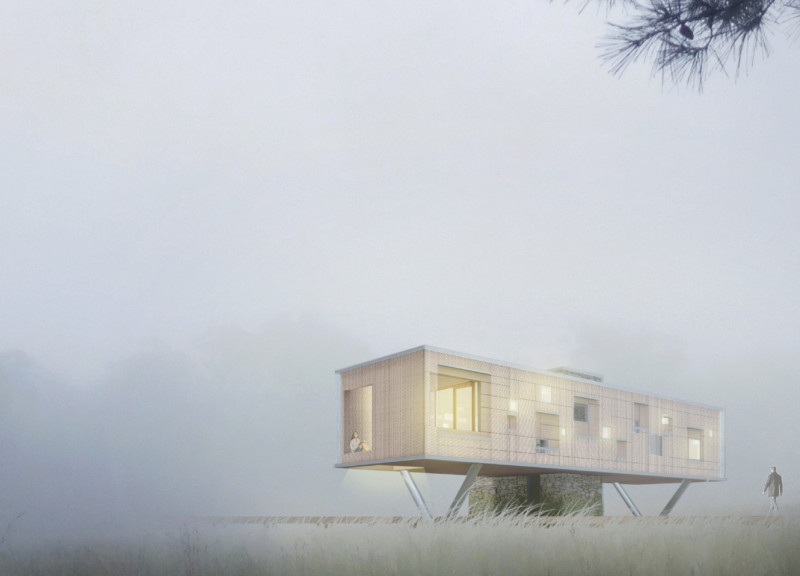5 key facts about this project
The overall architectural design embodies a commitment to sustainable living by employing innovative strategies to harness moisture from the atmosphere. At its core, the Fog Harvester serves as both a residence and a utility, illustrating how architecture can fulfill essential human needs while also addressing broader ecological concerns. Its primary function includes not just providing shelter, but also creating a self-sufficient environment where moisture collected from fog can contribute to water supply. This unique approach highlights how contemporary architecture can play a proactive role in resource management.
The architectural layout is designed to promote a seamless flow between public and private spaces. Common areas such as yoga studios and shared lounges encourage community interaction, while private rooms offer retreat and relaxation. Residents can navigate through these spaces fluidly, reflecting a design philosophy that prioritizes user experience and well-being. The use of large windows and open-plan interiors allows natural light to fill the spaces, enhancing the connection between the occupants and their natural surroundings. The materials chosen are reflective of local resources; sustainably sourced wood and durable fabric for the fog-harvesting screens contribute to a design that is both visually appealing and environmentally responsible.
Unique design approaches are evident in how the project integrates innovative technology with architecture. The fog harvesting system is a standout feature, utilizing mesh screens strategically arranged to maximize moisture collection from passing fog. This system is not merely an accessory; it is an essential element of the building that serves a functional purpose while reinforcing the architecture's sustainability goals. Furthermore, the building's elevated design minimizes its footprint and allows for the continued growth of the indigenous flora, fostering biodiversity and preserving the ecological integrity of the site.
Throughout the structure, sustainable materials are utilized, including locally sourced plywood and cork flooring, which not only reduce the environmental impact but also enhance the overall aesthetic without compromising durability. This focus on materiality provides a warmth and familiarity that resonates with the living environment, allowing the architecture to mesh with its surrounding landscape.
As an embodiment of how architecture can reflect both human needs and ecological considerations, the Fog Harvester invites contemplation about the future of residential design. It stands as a testament to the potential for architecture to play a significant role in resource conservation and community engagement. For those interested in a deeper understanding of this project, including the intricacies of its architectural plans, sections, and innovative designs, exploring the various elements of the presentation will provide valuable insights into its conception and execution. This project illustrates how thoughtful design can pave the way for more sustainable and harmonious living spaces.


























